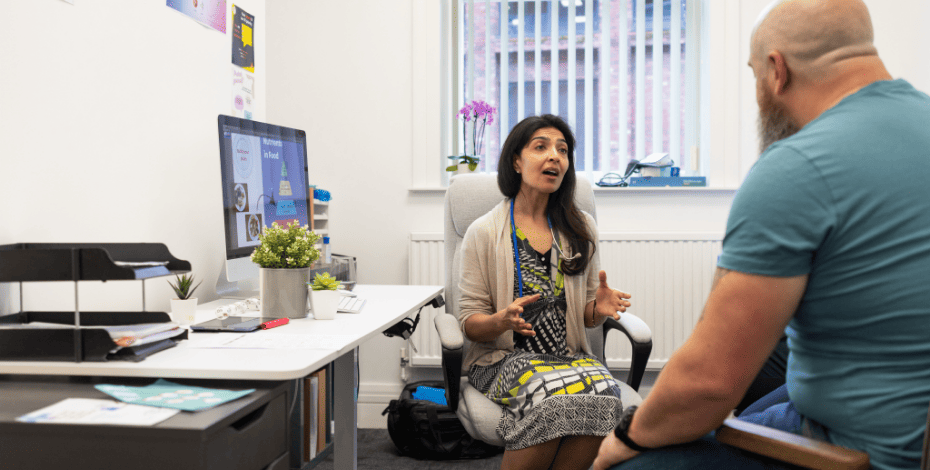
Five myths about hosting physio students in private practice

Casey Peiris, Roma Forbes, Jim Eustace, Ruth Dunwoodie and Vidya Lawton draw on their research and practice experience to tackle a few misconceptions and allay some common concerns about student placements.
Increasing numbers of new graduates are being employed in private practice, the largest employer of Australian physiotherapists (HWA 2019).
Despite this, the private practice sector accounts for less than 10 per cent of Australian physiotherapy student placements, and less than half of all physiotherapy students undertake a private practice block placement (Peiris et al 2019).
Increasing capacity for student placements within this sector would make an important and significant contribution to the sustainability of clinical education and increase student preparedness for work in this setting (Lawton et al 2021).
There are a number of reported barriers that preclude students from being hosted in private practice. Here, we address some common concerns raised by private practice managers and staff.
Myth 1. Hosting students will be a drain on our staff and practice
Physiotherapists involved in clinical education report enjoyment in teaching, satisfaction related to giving back to the profession (Bowles et al 2014, Hall et al 2015) and enhanced confidence through reassurance of one’s own knowledge and clinical skills (Hall et al 2015, Forbes et al 2020a).
Australian private practices that host students have recognised other benefits to staff including providing flexibility and variation in their workloads (Forbes et al 2020a) and providing opportunities for career progression.
Students bring new knowledge, ideas and an impetus for clinical reasoning which allow staff to practise more active reflection, especially when sharing ideas related to client care.
One of the major benefits of hosting students is also the potential recruitment of future staff (Peiris et al 2019).
Placements can be an opportunity to meet, trial and, in some cases, provide initial training to potential future employees (Forbes et al 2020a).
This is especially valuable where recruitment is a major time and financial cost and recruitment of unsuitable staff can be potentially disruptive to client care.
Hosting students and supporting their feedback and assessment needs does require time, but your local university can provide strategies to enhance the efficiency of supervision to maximise benefits and minimise the impact on your practice and staff.
Myth 2. Clients won’t like students to be involved in their care
Research has demonstrated that clients are amenable to the involvement of students in their physiotherapy care (Forbes & Nolan 2018).
Hosting physiotherapy students can provide opportunities for additional or longer services such as providing extra exercise, education or hands-on care from supervised students.
These additional services can enhance the reputation of the host practice and provide flexibility for client care, especially where cost may be a barrier (Bowles et al 2014, Forbes et al 2020b).
When supervision is active and consistent, the sharing of knowledge through clinical education can give clients an insight into the management of their condition, and students may be able to provide additional educational resources for individuals and groups.
Of course, not every client is comfortable with students being involved.
Private practices that host students report that communicating with their clients early and consistently about the option to have students involved, and providing clear opportunities for informed consent mitigates potential disruption to client care (Forbes et al 2020b).
Where student involvement may not be suitable for some clients or services, your local university can provide other ideas and strategies for supporting student learning, such as project- based tasks, developing in-services or completing clinical reflection activities that can benefit the student and your practice.
Myth 3. We don’t have enough clients to provide learning opportunities for students
There are many acceptable models of clinical education in private practice.
Students do not necessarily have to have their own caseload to gain a valuable learning experience.
Most private practices use a combination of observation, therapist-led/shared-care (where the therapist and student share the client care) and student-led models (where the student leads the client care as part of the wider clinical team).
These models often change throughout a placement depending on student and practice needs and student skills (Peiris et al 2019).
The student needs to be able to have enough client contact to demonstrate competency in clinical and professional practice, but they can do this in a number of ways.
Students may commence by observing their clinical educator and answering questions or completing clinical reasoning documentation to demonstrate their knowledge, and then progress to a therapist-led or shared-care model where the student completes parts of consults in conjunction with the clinical educator.
Once students and clinical educators gain confidence and skills, the student may have their own clients or complete full consults with certain clients under supervision (student-led).
Whatever model is chosen, it is important that the student has opportunities to reflect, discuss and synthesise concepts and develop the required skills.
Students won’t manage the same time frames as staff because, by the nature of being a learner, they will require a mix of client contact and non-contact time to consolidate their learning.
Guidance can be provided by your local university on how to choose appropriate clients for your students to see and strategies to promote additional student services to clients.
Myth 4. I don’t have experience as an educator
Research suggests that both the learning context and the learning relationship are highly influential to learner development.
Alongside being guided and provided with feedback during placements, students value clinical educators who are approachable and have strong interpersonal skills (Alexander et al 2020).
With support from your local university, you will be able to transfer your clinical and non-clinical physiotherapy skills to become an effective clinical educator who can supervise and guide students and provide effective feedback.
All universities provide resources and training options to assist clinical educators to facilitate student learning.
A range of options such as workshops, webinars, online learning and written resources are available, covering topics such as clinical education fundamentals, providing feedback, clinical reasoning and completing student assessment (Peiris et al 2019).
These professional development opportunities are usually free to attend and most universities provide additional training options depending on your needs.
Universities also have clinical education managers to provide support to students and clinical educators throughout the placement and to whom you will also have access.
It’s important that you get to know these people as good communication and engagement with your local university will enhance the benefits of hosting students.
If you’re still unsure, a good option to ‘dip your toe’ into taking students and gradually introducing them to your practice is to start out by offering observational experiences to students in their early years of study, before they embark on ‘hands on’ experience through their block placements.
Myth 5. Hosting students will impact the bottom line
Impacts on income and service delivery are common concerns that often prevent practices from hosting students.
Recent retrospective economic research in Australian physiotherapy private practices found that hosting students had little or no impact on the overall income or occasions of service of practices over a five-week placement period when compared to matched periods without students (Forbes et al 2021).
Additionally, the presence of students may have had a significant positive impact on the service delivery outcomes of the practices after the first week of the placement by students directly contributing to service provision as they gain knowledge and experience (Forbes et al 2021).
Practices adopting a student-led care model experienced higher increases in service provision and income than those using a therapist-led care model of student placements.
Smaller practices tend to adopt a therapist-led or shared-care model where the student undertakes observation and aspects of client care in an existing clinician’s client caseload.
Regardless, both approaches to student supervision can be achieved while minimising impact to the bottom line of clinicians and the practice.
Your local university provider will be able to suggest ways in which students can be involved that suits your practice and enables them to actively contribute to, or be integrated into, client services.
Further information for private practice providers who currently host, or are considering hosting students can be found here (member login required).
Dr Casey Peiris is a senior lecturer at La Trobe University, Dr Roma Forbes is a senior lecturer at The University of Queensland, Jim Eustace is the principal physiotherapist at Forest Lake Sports Injury and Rehabilitation Centre in Brisbane, Ruth Dunwoodie is a clinical education liaison manager at The University of Queensland, and Vidya Lawton is a clinical education manager at Macquarie University.
References
Alexanders J, Chesterton P, Gordon A, Alexander J and Reynolds C. (2020) Physiotherapy Student's Perceptions of the Ideal Clinical Educator. MedEdPublish https://doi.org/10.15694/mep.2020.000254.1
Atkinson R, McElroy T. Preparedness for physiotherapy in private practice: Novices identify key factors in an interpretive description study. Man Ther 2016; 1(22):116-21.
Bowles KA, Haines T, Molloy E, Maloney S, Kent F, Sevenhuysen S, Tai J. The costs and benefits of providing undergraduate student clinical placements for a health service organisation: A rapid review. Health Education and Training Institute, Australian Government. 2014. www.heti.nsw.gov.au. Accessed 13.10.19
Forbes R, Nolan D. Factors associated with patient-satisfaction in student-led physiotherapy clinics: A qualitative study. Physiother Theor Pr 2018; 34(9):705-713.
Forbes, R., Dinsdale, A., Brauer, S., Dunwoodie, R., Fooken, J., Khanna, D., Birch, S. (2021). Hosting pre-registration physiotherapy students in Australian private practices does not change service and economic outcomes; an economic analysis. Musculoskeletal Science and Practice, 52.
Forbes, R., Dinsdale, A., Dunwoodie, R., Birch, S., Brauer, S. (2020a). Weighing up the benefits and challenges of hosting physiotherapy student placements in private practice; a qualitative exploration. Physiotherapy Theory and Practice.
Forbes, R., Dinsdale, A., Brauer, S., Dunwoodie, R., Birch, S. (2020b). Exploring strategies used by physiotherapy private practices in hosting student clinical placements. Australian Journal of Clinical Education.
Hall M, Manns P, Beaupre L. To supervise or not to supervise a physical therapist student: A national survey of Canadian physical therapists. J Phys Ther Educ 2015; 29(3):58-67.
Health Workforce Australia. Australia’s Health Workforce Series – Physiotherapists in Focus. 2019. https://hwd.health.gov.au/assets/Physiotherapist%202019.pdf Accessed January 2021.
Lawton V, Jones T, Dean C (2021) Students achieve comparable performance scores for clinical placements in public and private sectors: a longitudinal observational study.
Journal of Physiotherapy, Volume 67, Issue 1, Pages 56-61
Peiris C, Wells C, Reubenson A, Lawton V, Francis-Cracknell A, Dunwoodie R (2019) Moving forward – private practice placement capacity and quality. Paper presented at the APA
Momentum 2019 Physiotherapy Conference, Adelaide.
© Copyright 2025 by Australian Physiotherapy Association. All rights reserved.





